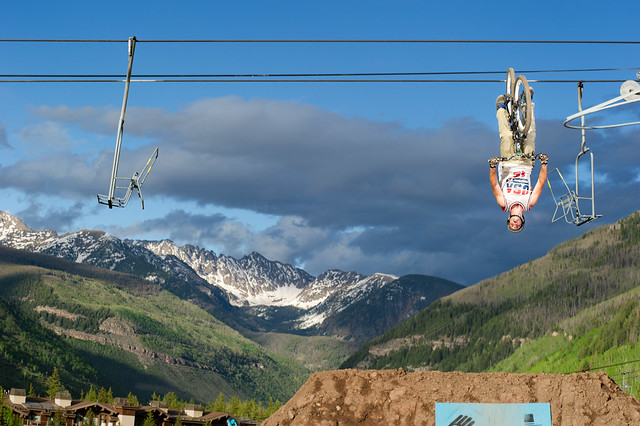Lens Choice for the Best Shot
Don't use a longer lens just so you can shoot further away for convenience! Think about compression, distance, and distortion. The shot may look 100x better if you get in closer with a wide lens!
Choosing the right lens for a photo is one of the most important aspect for getting a great shot. With a bad lens choice and angle, you're image won't be nearly as appealing. There are several factors that go into choosing a lens.
Compression: The more zoomed in you shoot, the more compression that you will get in your image. What that means is that the elements will look closer. Shooting a long lens works particularly well when you have big mountains in the distance that you want to show in the image. If you shoot with a wide lens up close to the athlete, the mountains will look particularly small. Shoot with a telephoto zoomed all the way in, and the mountains will appear closer than they actually are. This is a great method to incorporate more environment into the shot.
If you are shooting with a wide or ultra-wide lens, you can eliminate distracting elements from the background by shrinking them down. A lens close to 50mm is about what your eye can see, so use a 50mm prime when you want it to look the same as what you are seeing.
Image shot at 200mm to bring the mountains in closer to the action.
Distance: Depending on how far you are from your subject, you may want them to appear larger in the frame, or smaller. Shoot fairly close with a wide-angle and your subject still looks fairly big. Move back a bit with the same lens if you want the subject to appear smaller. If you simply can't get in closer due to some factor (crowd, environment, etc…) then pull out the telephoto and your subject will still appear large in the frame. Always keep compression in mind when figuring out what lens to shoot at what distance.

Captured from fairly far away with a 24-70mm lens set to 29mm.
Distortion: Wide angle lenses and long zoom lenses create distortion. The wider you go, the more stretched out and rounded your image will appear. Obviousely a fisheye is designed to enhance this distorted look. Longer lenses typically give some distortion as well, but it's less obvious. Action photographer's can really use the wide lens distortion to their advantage. By getting in close and placing the athlete towards the corner of a wide lens, the shot can have more impact. It also makes features such as jumps and cliffs look much bigger. Finally, the close wide-angle lens will let you position the sky behind your athlete to make for a better background. Use distortion to your advantage!
Image captured with ultra wide lens, down low to distort pipe, and place sky behind athlete for a de-cluttered backdrop.
Depth of Field: When shooting longer lenses, you will get less depth of field in your images. This is great if you want blurred elements in the foreground. The longer the lens, and the more open it is (f/2.8 for example), the shallower the depth of field. Wide lenses can't achieve as shallow of depth as zoomed lenses. Here's an article explaining about fast glass and shallow depth of field.
Shot at f/2.8 for shallower depth of field with a standard zoom of 48mm using a 24-70mm lens. The longer the lens, the more blur achieved.
Choosing the right lens to showcase the environment and athlete at their best is a very important thing to keep in mind. It's all to easy to show up on location and shoot without thinking. Decide what's important to you (compression, distance, distortion, and depth of field) and choose the right lens for the job to get the best shots possible from any given situation!











No comment posted yet.